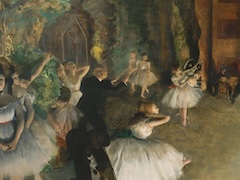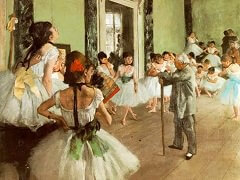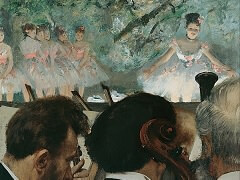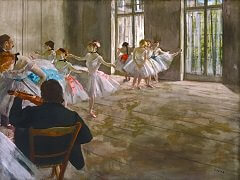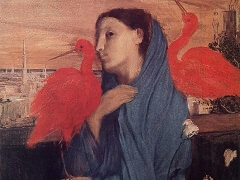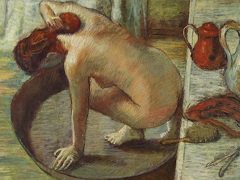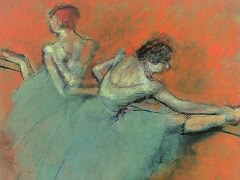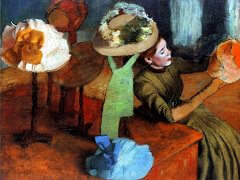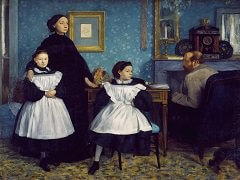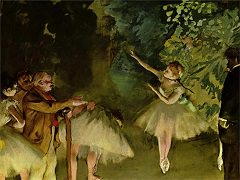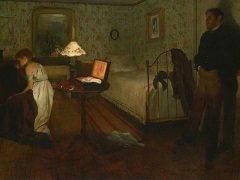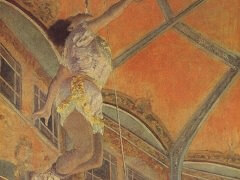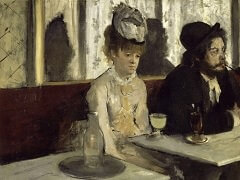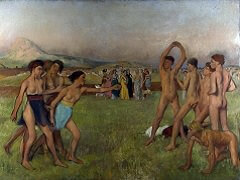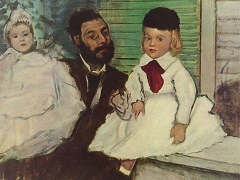Ballet Rehearsal on Stage, 1974 by Edgar Degas
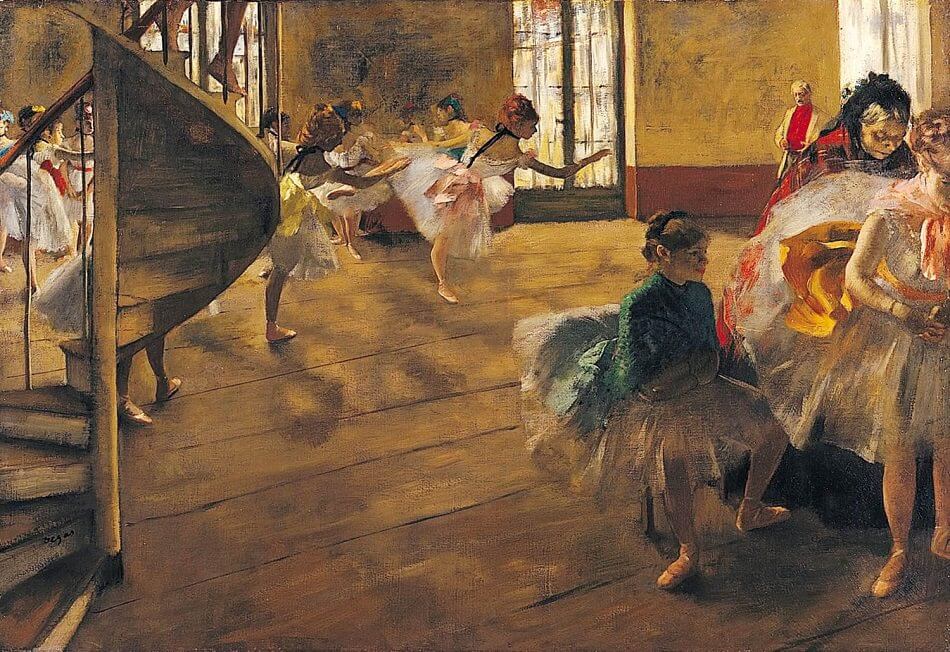
For Ballet Rehearsal, Degas' chosen a viewpoint slightly from above, to one side, with the focus on the stage bordered by the footlights. The lightness of the ballerinas dancing, contrasts with the relaxed gestures of those on the left, waiting to perform. The thin layer of paint, rendered even more transparent with time, allows the naked eye to see the painter's reworking. The legs of some of the dancers at rest have been retouched. In the middle of the young women stood a ballet teacher, his back towards the viewer. Finally, near to the seated man was another figure collapsed in a chair.
This painting in shades of grey was immediately noticed at the first Impressionist exhibition in 1874. The painter Giuseppe De Nittis wrote to a friend: "I remember a drawing that must have been of a dance rehearsal [...] and I can tell you it was extremely beautiful: the muslin costumes were so diaphanous, and the movements so true to life that it has to be seen to be believed; it is just impossible to describe". Like De Nittis, many critics see this work as a drawing rather than a painting. It is true that Degas captured the most delicate nuances by using shaded tones. He invented this neutral, milky tone, whilst the harsh stage lighting brings out the brilliant white of the tutus that give rhythm to the composition.
Of all Degas' ballet scenes, this monochrome painting differs radically from the veritable "orgy of colours" splashed around in his later works. The explanation is to be found no doubt in the fact that Ballet Rehearsal was meant to serve as a model for an engraver.

